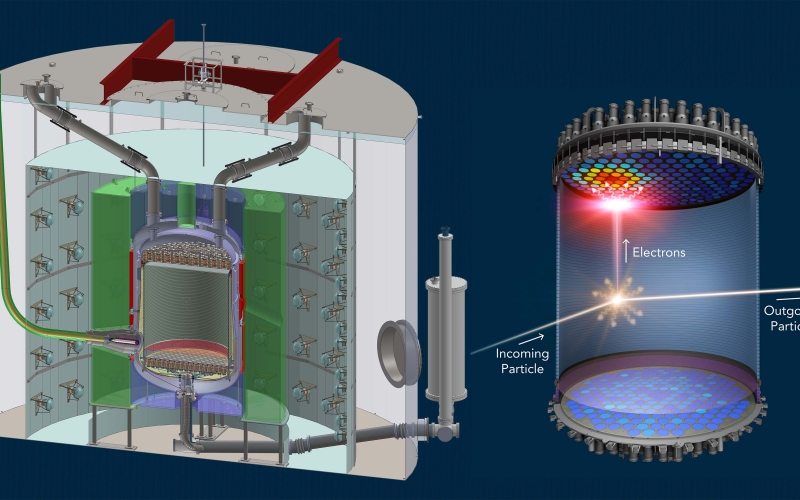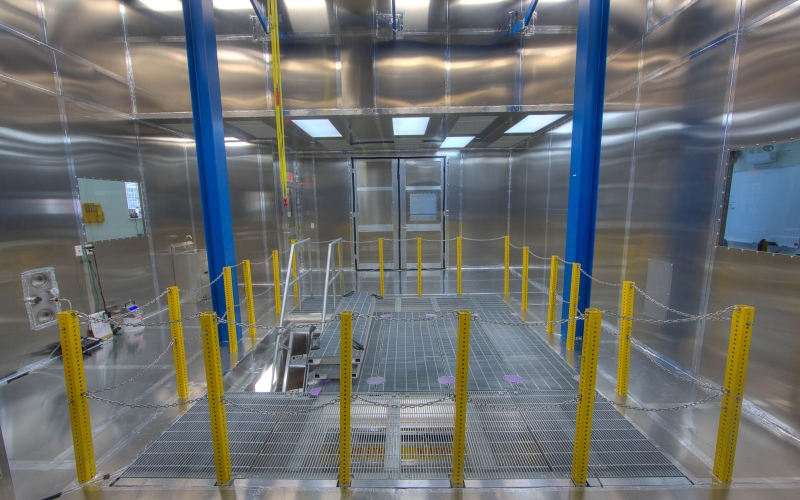
Inside the surface lab, the cleanroom in which LUX was assembled, is being expanded to accommodate LZ, the second-generation dark matter detector. Right next door stands a new building that will keep background radiation out of the cleanroom during detector assembly.
LUX-ZEPLIN will be 30 times bigger and 100 times more sensitive than its predecessor, the Large Underground Xenon experiment. A bigger, more sensitive detector needs a bigger and cleaner assembly area, said John Keefner, underground operations engineer and project manager for the cleanroom construction.
The existing cleanroom is 400 square feet. The expansion will nearly double that space to 780 square feet. The cleanroom is guaranteed to be a class-1000, but could reach a class-100 rating with good controls. New features include aluminum sheeting; air locks; a hoist; a 12-foot-deep pit in which the detector will be assembled; and, most importantly, a radon-reduction system.
“That’s the magic part of this cleanroom,” Keefner said. “The room will be positively pressured so radon can’t get in.”
Radon is a naturally occurring radioactive gas that significantly increases background noise in sensitive physics projects. Experiments go to great lengths to eliminate or reduce that noise.
The radon reduction system pressurizes, dehumidifies and cools air to minus 60 degrees Celsius before sending it through two columns, each filled with 1600 kg of activated charcoal, which remove the radon. The pressure is released, warmed and humidified before flowing into the cleanroom.
The manufacturer guaranteed the system will reduce radon by 1,000 times. But when it was tested, it was reduced by 3,000, said David Taylor, experiment review engineer. “That greatly exceeds our expectations.”
Once the radon-reduction system is installed and the cleanroom completed, assembly on LZ will begin, putting it on track to begin operating in 2020.

